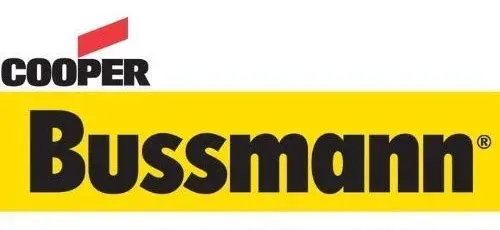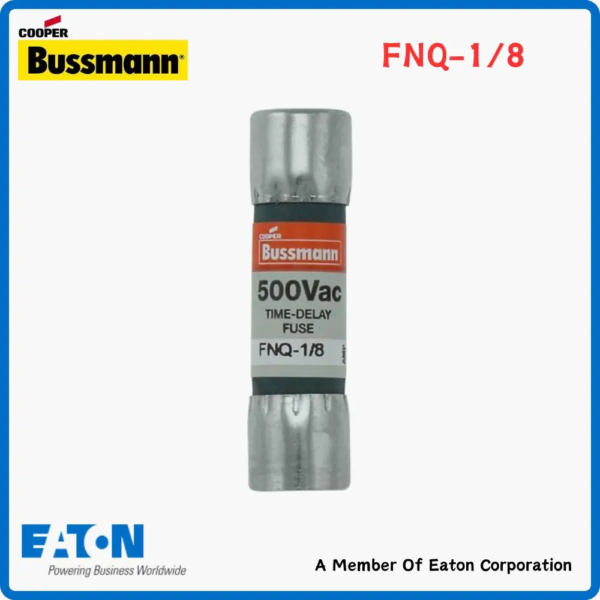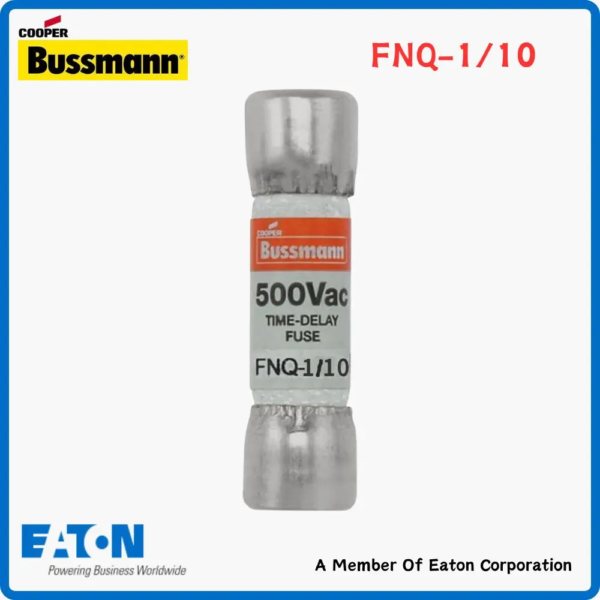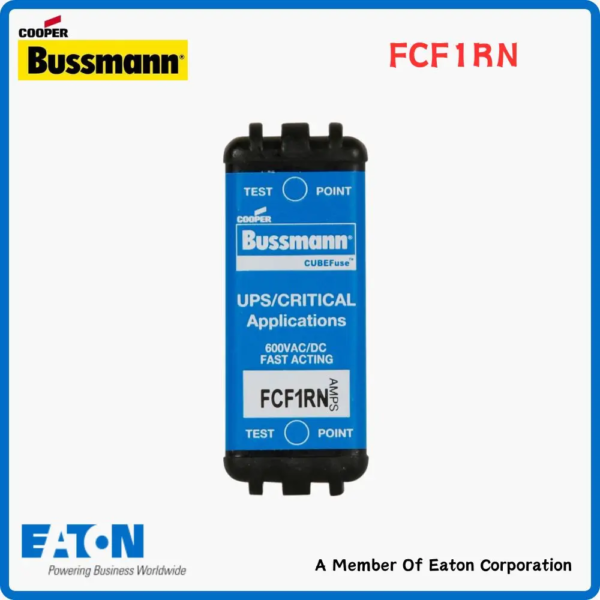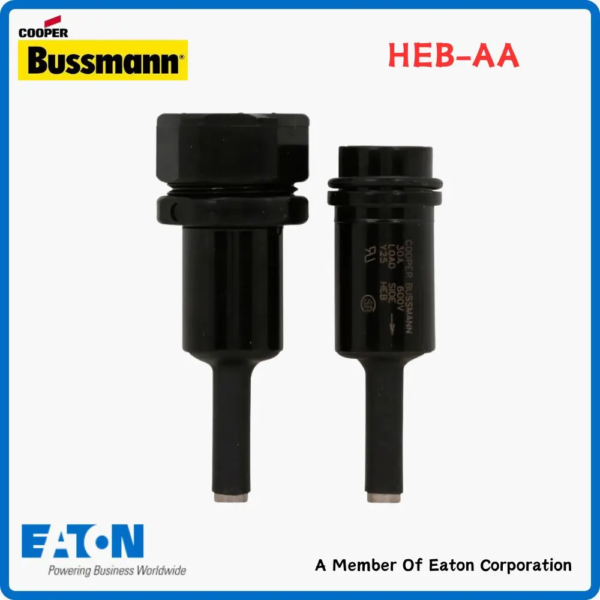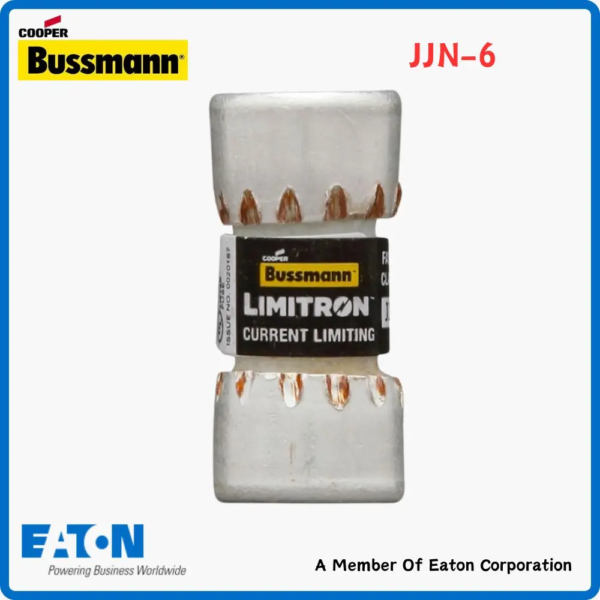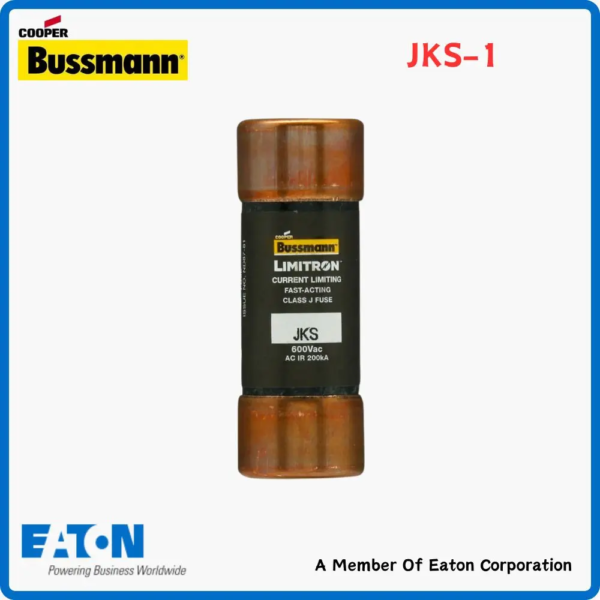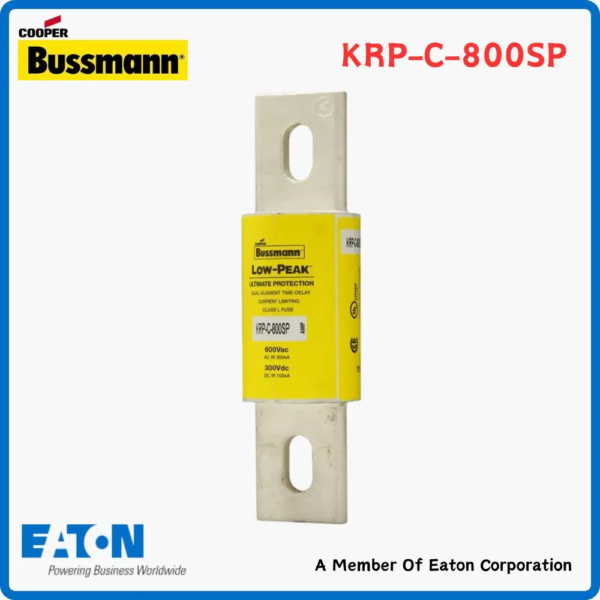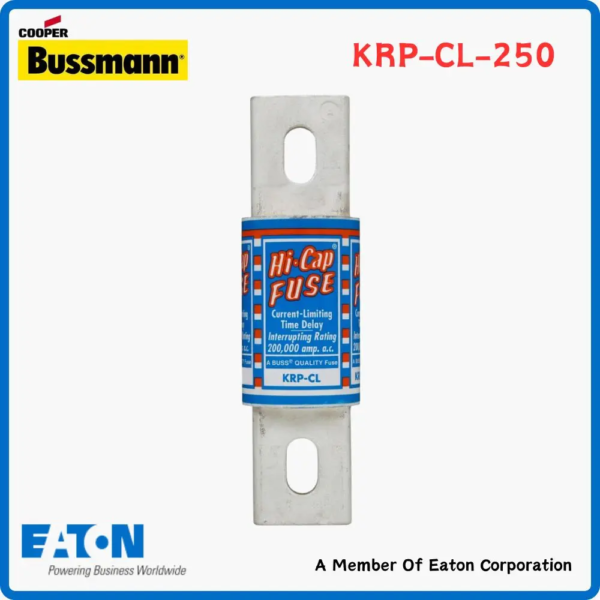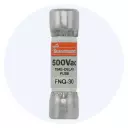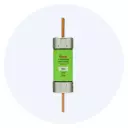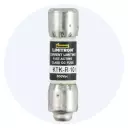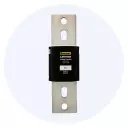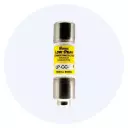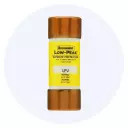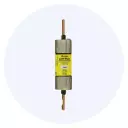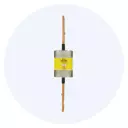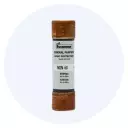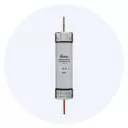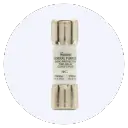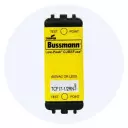Bussmann FNQ Fuses
“Eaton Bussmann Fuse JKS-1 Low Voltage Fuse” has been added to your cart. View cartEaton Bussmann FNQ-1/8 Low Voltage Fuse
Rated 5.00 out of 5In stock
$16.74EachSKU: FNQ-1/8Weight 0.175 lbs Dimensions 0.01138889 × 0.01138889 × 0.04166667 yd Brand Eaton Bussmann
Eaton-Bussmann, with its headquarters in St. Louis, Missouri, is a division of Eaton Corporation that specializes in the production of circuit protection products. These products are designed for use in the electrical, electronic, and automotive industries, both domestically and on a global scale. The company boasts a strong manufacturing network with facilities located in three domestic and six international locations, reflecting its commitment to serving customers worldwide. With a team of approximately 3,000 employees, Eaton-Bussmann is well-positioned to meet the ever-evolving needs of its customers in the electrical protection industry.
Eaton stands as a forward-thinking leader in power management, focused on enhancing lifestyles and safeguarding the planet. Leveraging the worldwide momentum of electrification and digital innovation, they propel the global shift towards renewable energy, addressing pressing power management issues on a global scale.Product type Low Voltage Fuse
Voltage 500 Volt
Eaton Bussmann FNQ-R-1/10 Low Voltage Fuse
Rated 5.00 out of 5In stock
$11.33EachSKU: FNQ-R-1/10Weight 0.175 lbs Dimensions 0.01138889 × 0.01138889 × 0.04166667 yd Brand Eaton Bussmann
Eaton-Bussmann, with its headquarters in St. Louis, Missouri, is a division of Eaton Corporation that specializes in the production of circuit protection products. These products are designed for use in the electrical, electronic, and automotive industries, both domestically and on a global scale. The company boasts a strong manufacturing network with facilities located in three domestic and six international locations, reflecting its commitment to serving customers worldwide. With a team of approximately 3,000 employees, Eaton-Bussmann is well-positioned to meet the ever-evolving needs of its customers in the electrical protection industry.
Eaton stands as a forward-thinking leader in power management, focused on enhancing lifestyles and safeguarding the planet. Leveraging the worldwide momentum of electrification and digital innovation, they propel the global shift towards renewable energy, addressing pressing power management issues on a global scale.Product type Low Voltage Fuse
Voltage 500 Volt
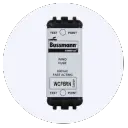 Bussmann WCF Fuses
Bussmann WCF Fuses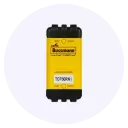 Bussmann FCF Fuses
Bussmann FCF Fuses
Eaton Bussmann Series UL Class CF, FCF 1RN Fuse
Rated 5.00 out of 5In stock
$79.99SKU: FCF1RNBrand Eaton Bussmann
Eaton-Bussmann, with its headquarters in St. Louis, Missouri, is a division of Eaton Corporation that specializes in the production of circuit protection products. These products are designed for use in the electrical, electronic, and automotive industries, both domestically and on a global scale. The company boasts a strong manufacturing network with facilities located in three domestic and six international locations, reflecting its commitment to serving customers worldwide. With a team of approximately 3,000 employees, Eaton-Bussmann is well-positioned to meet the ever-evolving needs of its customers in the electrical protection industry.
Eaton stands as a forward-thinking leader in power management, focused on enhancing lifestyles and safeguarding the planet. Leveraging the worldwide momentum of electrification and digital innovation, they propel the global shift towards renewable energy, addressing pressing power management issues on a global scale.Product type Fuse
Voltage 600 Volt
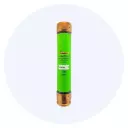 Bussmann FRS Fuses
Bussmann FRS Fuses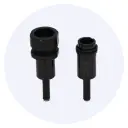 Bussmann HEB-AA Fuse
Bussmann HEB-AA Fuse
Eaton Bussmann HEB-AA Inline Fuse Holder
Rated 5.00 out of 5In stock
$18.99SKU: 504-HEB-AA-2Brand Eaton Bussmann
Eaton-Bussmann, with its headquarters in St. Louis, Missouri, is a division of Eaton Corporation that specializes in the production of circuit protection products. These products are designed for use in the electrical, electronic, and automotive industries, both domestically and on a global scale. The company boasts a strong manufacturing network with facilities located in three domestic and six international locations, reflecting its commitment to serving customers worldwide. With a team of approximately 3,000 employees, Eaton-Bussmann is well-positioned to meet the ever-evolving needs of its customers in the electrical protection industry.
Eaton stands as a forward-thinking leader in power management, focused on enhancing lifestyles and safeguarding the planet. Leveraging the worldwide momentum of electrification and digital innovation, they propel the global shift towards renewable energy, addressing pressing power management issues on a global scale.Product type Fuse
Voltage 600 Volt
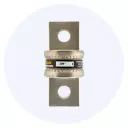 Bussmann JJN Fuses
Bussmann JJN Fuses
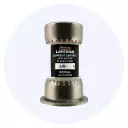 Bussmann JJS Fuses
Bussmann JJS Fuses
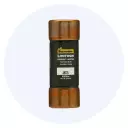 Bussmann JKS Fuses
Bussmann JKS Fuses
Eaton Bussmann Fuse JKS-1 Low Voltage Fuse
Rated 5.00 out of 5In stock
$13.99SKU: JKS-1Brand Eaton Bussmann
Eaton-Bussmann, with its headquarters in St. Louis, Missouri, is a division of Eaton Corporation that specializes in the production of circuit protection products. These products are designed for use in the electrical, electronic, and automotive industries, both domestically and on a global scale. The company boasts a strong manufacturing network with facilities located in three domestic and six international locations, reflecting its commitment to serving customers worldwide. With a team of approximately 3,000 employees, Eaton-Bussmann is well-positioned to meet the ever-evolving needs of its customers in the electrical protection industry.
Eaton stands as a forward-thinking leader in power management, focused on enhancing lifestyles and safeguarding the planet. Leveraging the worldwide momentum of electrification and digital innovation, they propel the global shift towards renewable energy, addressing pressing power management issues on a global scale.Product type Low Voltage Fuse
Voltage 600 Volt
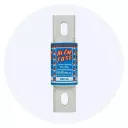 Bussmann KRP Fuses
Bussmann KRP Fuses
Eaton Truetrac Differential vs Limited Slip
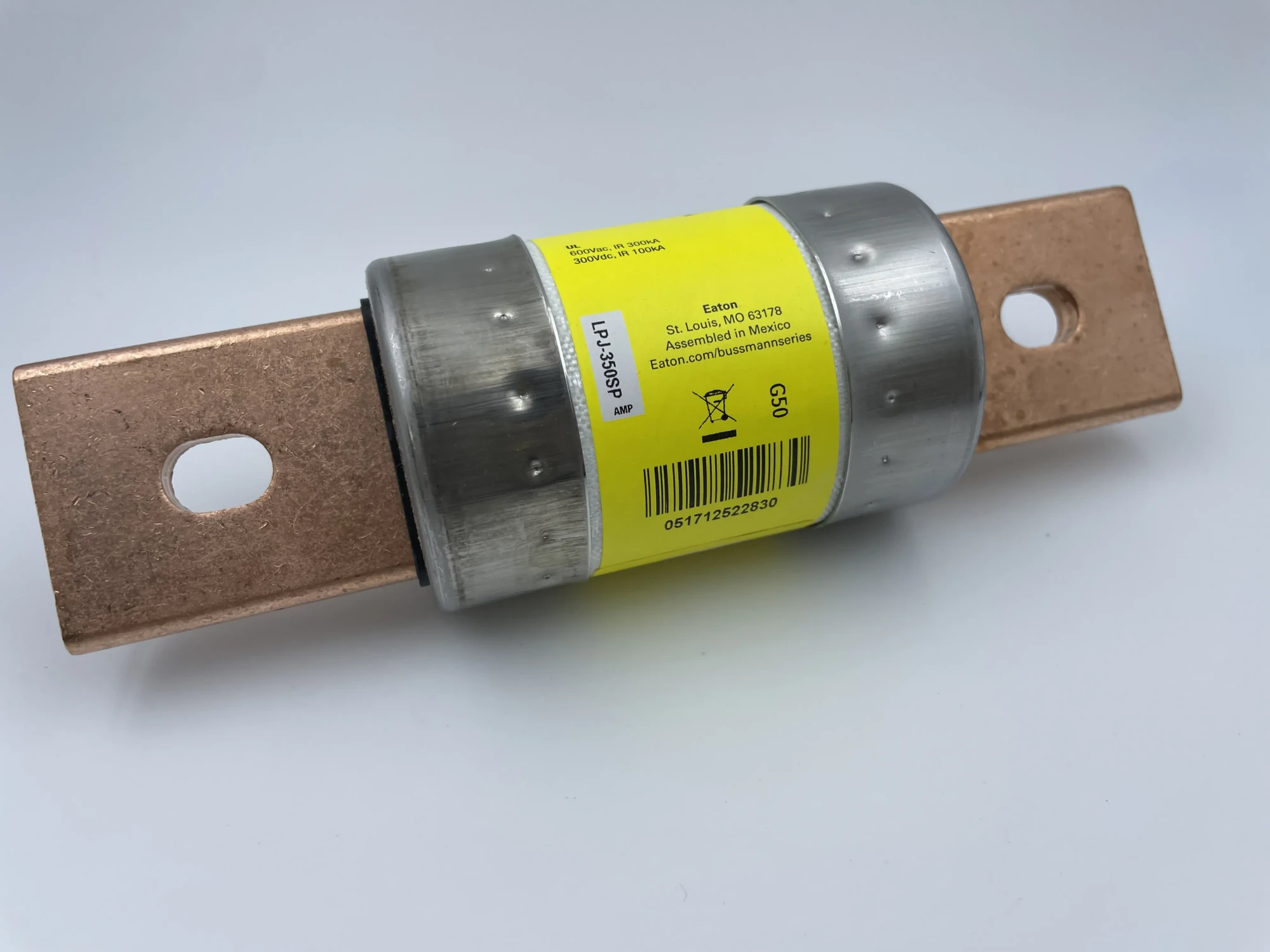
When it comes to differential technology, two popular options stand out: the Eaton Truetrac Differential and Limited Slip. Both are designed to improve traction and stability in vehicles, but they operate in distinct ways. In this article, we’ll delve into the product parameters, specifications, uses, and precautions of the Eaton Truetrac Differential vs Limited Slip, providing a comprehensive solution for those seeking to understand the differences between these two technologies.
Eaton Truetrac Differential:
The Eaton Truetrac Differential is a type of helical-gear limited-slip differential. It’s designed to provide smooth, quiet operation and exceptional traction in a variety of driving conditions. The Truetrac differential uses a patented helical-gear design to transfer torque between the wheels, ensuring that power is delivered to the wheel with the most traction. This results in improved stability, reduced wheelspin, and enhanced overall performance.
Limited Slip:
Limited Slip differentials, on the other hand, use a variety of technologies to limit the amount of slip between the wheels. These can include clutch packs, gear sets, and electronic controls. Limited Slip differentials are designed to provide improved traction in low-grip situations, such as snow, ice, or mud. However, they can be more prone to noise, vibration, and wear than the Eaton Truetrac Differential.
Product Parameters and Specifications:
When comparing the Eaton Truetrac Differential to Limited Slip, several key product parameters and specifications come into play. These include:
- Torque transfer: The Eaton Truetrac Differential is capable of transferring up to 100% of available torque to the wheel with the most traction, while Limited Slip differentials typically transfer between 20-50% of available torque.
- Noise and vibration: The Truetrac differential is designed to operate quietly and smoothly, while Limited Slip differentials can be more prone to noise and vibration.
- Wear and maintenance: The Eaton Truetrac Differential requires minimal maintenance and is designed to withstand the rigors of off-road driving, while Limited Slip differentials may require more frequent maintenance and repair.
- Driving conditions: The Truetrac differential is suitable for a wide range of driving conditions, including on-road, off-road, and low-grip situations, while Limited Slip differentials are often optimized for specific driving conditions, such as snow or ice.
Uses and Applications:
Both the Eaton Truetrac Differential and Limited Slip are used in a variety of applications, including:
- Off-road driving: The Truetrac differential is particularly well-suited for off-road driving, where its ability to transfer torque and provide traction is essential.
- Racing and performance: Limited Slip differentials are often used in racing and performance applications, where their ability to provide improved traction and stability is critical.
- Towing and hauling: The Eaton Truetrac Differential is suitable for towing and hauling applications, where its ability to provide smooth, quiet operation and exceptional traction is beneficial.
Precautions and Considerations:
When considering the Eaton Truetrac Differential vs Limited Slip, several precautions and considerations come into play. These include:
- Installation and maintenance: Proper installation and maintenance are critical to ensuring the optimal performance and longevity of both differentials.
- Driving technique: Drivers should be aware of the differences in driving technique required for each differential, particularly when driving in low-grip situations.
- Vehicle modifications: Certain vehicle modifications, such as lift kits or larger tires, may require additional adjustments or upgrades to the differential.
In conclusion, the Eaton Truetrac Differential and Limited Slip are two distinct technologies with different product parameters, specifications, uses, and precautions. While both are designed to improve traction and stability, the Truetrac differential offers a unique combination of smooth, quiet operation and exceptional traction, making it an ideal choice for a wide range of driving conditions. By understanding the differences between these two technologies, drivers and enthusiasts can make informed decisions about which differential is best suited to their needs and applications.
